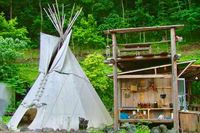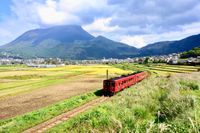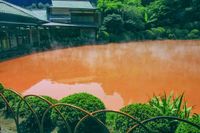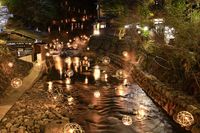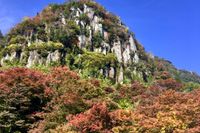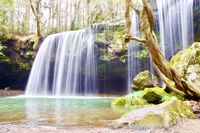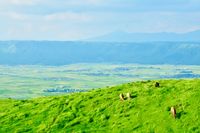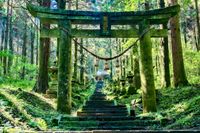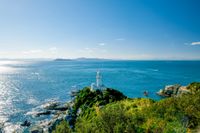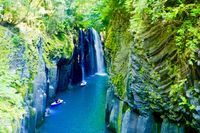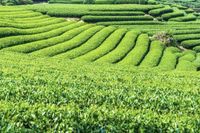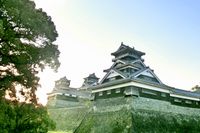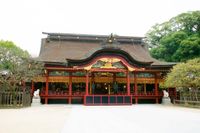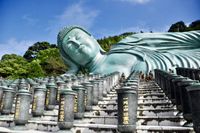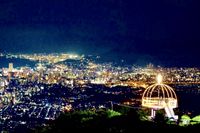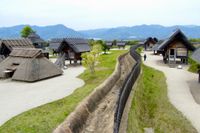Yufuin Onsen
大分県/由布市湯布院町川上

Description
This is an Onsen close to Kinrin Pond, which is at the foot of Mount Yufu. The volume of hot spring water is the second largest in Japan. It has the distinct characteristic of having numerous luxury traditional Japanese lodgings which are integrated into the natural surroundings with the minimum of disturbance. The central Yufu street in this area has many fashionable miscellaneous goods shops, and restaurants, making it popular with visitors young and old.
Homepage
Address
Nearby Car Night Spots
Nearby Activities
There is no nearby activities
Ranking Stations
(Bonfire BBQ) Chita Mihama Noma Beach Station
¥3,500〜
/ per nightAichi Noma, Mihamacho, Chita County
4.7
(42)Vanlife BASE | 45 min. from Narita Airport / Perfect for campervan travel/A seaside town rich in nature/Japanese countryside town/welcome traveler
¥7,000〜
/ per nightChiba Koseki, Kujukuri-machi, Sambu-gun
5.0
(61)Shin Meishin Suzuka PA (inbound) RV Station Suzuka * With Power!
¥2,200〜
/ per nightMie Yamamotocho, Suzuka-shi
4.3
(156)Nearby Drive Spots
Mount Yufu
This is a 1583m high active volcano in Yufu city. Due to its resemblance to Mount Fuji, it is sometimes called the "Bungo Fuji". It has been historically known as a site of worship and object of reverence, and also appears as a holy mountain in the "Kojiki" anthology. It is ideal for those who don't wish to climb the mountain as well as the railway is also popular with train enthusiasts, with the route having amazing scenery of Mount Yufu in its backdrop.
Beppu Onsen
This is a hot spring bath in Beppu City. It has 1300 years of history, and boasts the highest volume of natural hot spring water in Japan. It was built around the 8 Onsen towns known as the "8 baths", and due to the sulphuric smells, it has a famous "Beppu hell tour" with the "water hell", "blood pond hell", "white pond hell" and "tornado hell". There are also plenty of sand baths and bedrock baths.
Kurokawa Onsen
This is an onsen in the northern part of Mount Aso. It is one of the most well recognized Onsen areas, with 2 stars from the Michelin tourism guide. It was built with the concept of the town roads being a "corridor" with each guest inn as a "room", and was built whilst maintaining integration with the natural surroundings. It is popular for those visiting several different Onsen.
Yabakei Gorge
This is a valley in the northern part of Oita Prefecture, one of the three most famous in Japan. It is an extremely old value which has stellar views of the rock formations made by the volcanic activity from around 2.6 million years ago and has views of numerous unusual rock formations. There are countless spectacular scenes along the way, and they are collectively referred to as the sixty-six landscapes of the Yabakei Gorge.
Nabegataki Falls
This is a hot spring in Unzen city, built in 701 AD. From the Edo era(1603-1868) up until the Meiji era(1868-1912), it developed as a resort area for many foreigners who visited Nagasaki, with Sea Bolt being one of the first. The 30 Onsen have the smell of the naturally occurring sulphur and smoke, known as the "Unzen hell". It also has a sad history of being witness to Christian martyrdom.
Mount Aso
This is an active volcano situated in the Aso region of Kumamoto prefecture, where plumes of smoke can still be seen. An eruption from around 90,000 years ago formed the largest caldera rock formation of 380 square kilometers, which provides stunning views. At the foot of the mountain, there are camp facilities, as well as horse riding and star gazing which can be enjoyed by visitors.
Kamishikimi Kumanoimasu Shrine
This is a shrine with an unknown date of construction, with the shrine deities being the Izanagi no Kami (Male God) and Izanami no Kami (Goddess), and the Iwagimi Shogunate. There is a mysterious path up to the shrine of 260 steps, at the top of which is situated the shrine. It is said that the sacred Nageia tree brings fortune in love with the, Ugeto rock bringing fortune for success. Because it became the stage of animation "It is also the setting for the anime "Hotarubi no Mori e", and many fans make the trip here to see the original setting in the flesh.
Cape Sada
This is a cape area at the Sada peninsula in Ehime prefecture. At the tip is situated the lighthouse (height - 18m, light extension range 49 meters), and on a clear day, visitors can view Beppu and Kyushu from afar. This area was also a military base during the war, and remains that evidence this can be seen in this area.
Takachiho Gorge
This is a canyon of the Gokase River, located at the prefectural border of Miyazaki and Kumamoto. A cliff that reaches 80-100 meters high continues over into the distance for 7 km. It is a mystery of nature formed by the large eruption of Mount Aso. It is the land of "Tenson Korin" (who is believed to be a descendent of the grandson of the great God Amaterasu, Ninigi). Boat trips are also popular in this area.
Yame Chuo Tea Garden
This is a tea field situated in Yame city. It is the 6th largest tea producer in Japan, and makes up 3% of Japan's tea. Tea leaves have been grown here since the Sengoku era(1467-1600), and has spread in prominence and popularity since them.
Kumamoto Castle
This is one of Japan's three most famous castles, built in 1607 by Kato Kiyomasa. The castle is famous for being the place where Miyamoto Musashi, the most famous Japanese sword warrior and author of the martial art "book of five rings" spent his later years, as well as being the scene to the Southwestern War, the final civil war in Japanese history. The main hall known as the "Shokun no Ma" represents the grandiose and opulent Daimyo culture. The castle was damaged by the Kumamoto earthquake of 2016, but has been restored.
Dazaifu Tenmangu Shrine
This is a temple built in 919 AD by Fujiwara Nakahira. The great heavenly God Sugawara Michizane is enshrined in this temple, and there is splendid Shinto architecture above the grave of this God. It is a popular site of reverence for students, as this temple God is known as the deity for learning and study, and along with the Kitano Tenmangu Shrine in Kyoto, this is the main head temple of the Tenmangu shrine group, which consists of around 12,000 shrines. The area is famous for Tobi Ume plums, and each year, a priestess will donate a plum tree to the country, and is also used for plum wine.
Nanzoin Temple
This is a Shingon sect main head temple built in 1899, as a temple from Mount Koya. Nanzoin temple had provided Burmese and Nepalese children with medical aid, milk and stationery over the years, and as a return gift, the Myanmar national buddhist institution gifted various buddhist relics, known as Sarira. In 1995, a 41 meter reclining buddha statue was built to enshrine these buddhist relics. Other areas to look out for which are relics of its history are the buddha footprint, 500 arhats and the Seven Deities of Good Fortune tunnels.
Mount Sarakura
This is a 622 meter high mountain situated in Norther Kyushu. The view of Kyushu below from the top of the mountain is known as the "10 billion dollar view". There are endless destination for visitors, including the rock climbing practice area, Kunimi rocks, the stunning cedar trees known as "Empress cedar" as well as camping facilities.
Yoshinogari Historical Park
This is the largest ruins area from the Yayoi era (around 500 BC). The biggest characteristic is the collection of relics associated with the defense of the settlement, with about 2.5 km of outer bunkers and fences. In addition, as from excavation survey findings, pit dwellings, tall floor warehouses, observation towers, tombs, bronze ware, copper mirrors and the like have been discovered over an area of 36 hectares, making it a very important historical site which tells the story of the lives of people in ancient times.

